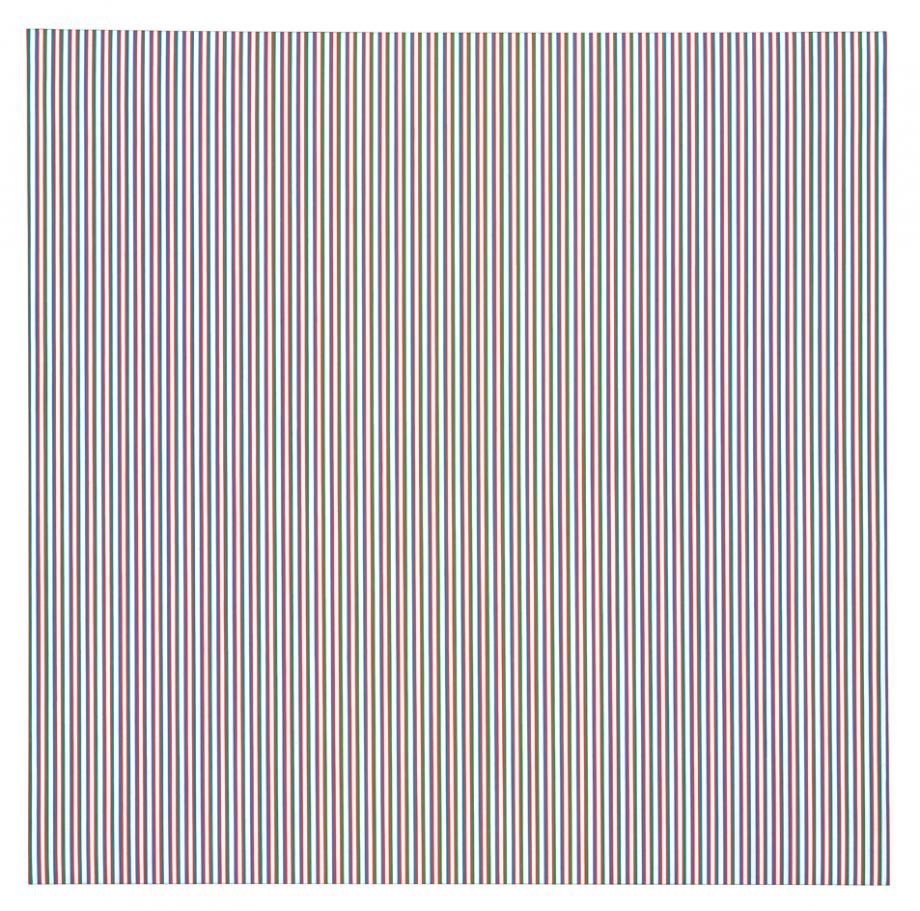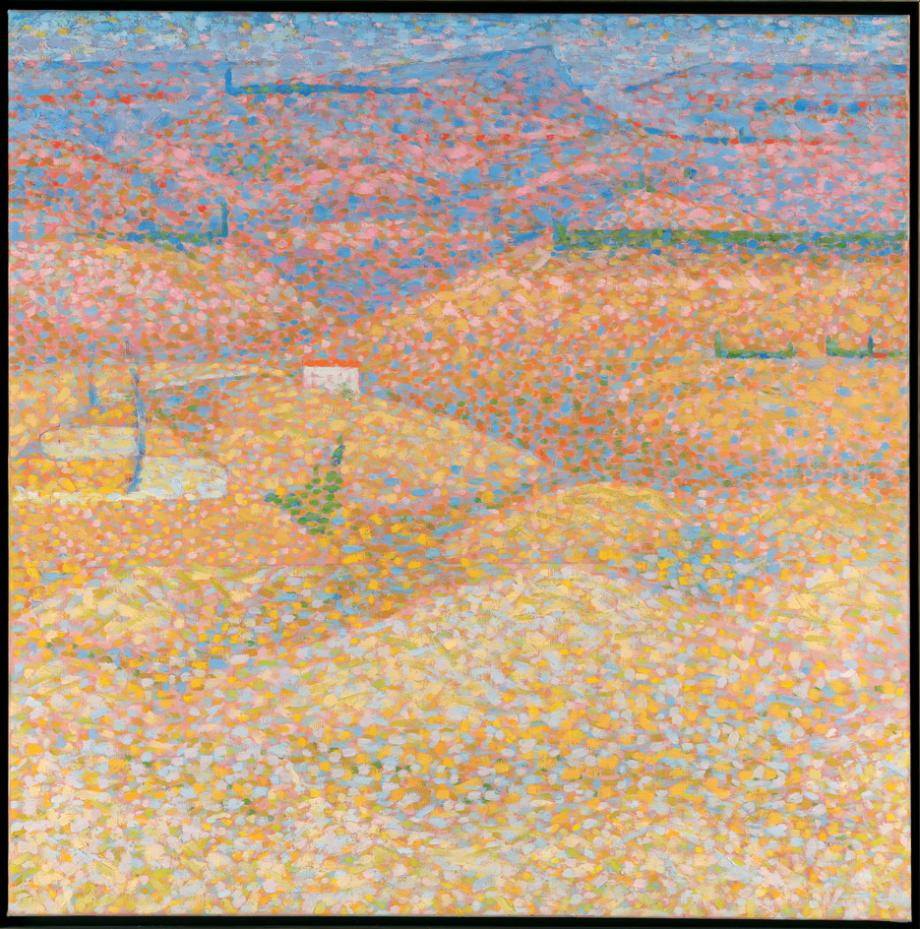Learning from Seurat: Bridget Riley's remixes arrive at the Courtauld Gallery

It might seem a leap from French Pointillist pioneer George Seurat to Brit Op artist Bridget Riley. But as a new show at London’s Courtauld Gallery makes clear, Riley was deeply influenced by the Seurat. And by one painting in particular.
In 1959 Riley - then in her late twenties and still working as an illustrator at the advertising agency J Walter Thompson - came to see Seurat’s Bridge at Courbevoie, painted in 1887 and part of The Courtauld’s permanent collection. Riley painted her own version, blowing up Seurat’s dots, adding a sense of cosmic explosion to the original (she had seen The Whitechapel’s Jackson Pollock show the previous year and was keen to bring that kind of elemental energy to her work). She would soon be producing her own groundbreaking perfect waves and other eye-popping geometry (oddly perhaps in black and white. It wasn’t until the late Sixties that she began to tackle contrasting colour).
The Courtauld Show, ‘Bridget Riley: Learning from Seurat’, takes up just one room but brings together Seurat’s original and Riley’s remix as well as some of her own pointillist experiments, such as Pink Landscape (1960); landmark Op art works Tremor (1962) and Morning 1 (1967); as well as later works including Ecclesia (1985). The show suggests that Riley constantly returned to Seurat’s humming, buzzing bridge across the Seine. And in joining the dots, the show is also a tribute to Seurat, positioning him as an even more radical and transformative artist than we had thought.

Along with her picture inspired by Seurat’s Bridge at Courbevoie, are many other of her experimental paintings. Pictured: Late Morning I, 1967.

Pink Landscape (1960), is one of her own pointilist experiments, one of a number that suggest Riley continuely returned to Seurat’s inspirational style. n

Pictured: Vapour, 1970.
INFORMATION
’Bridget Riley: Learning from Seurat’ runs until 17 January 2016
ADDRESS
The Courtauld Institute of Art
Strand
London
WC2R 0RN
Receive our daily digest of inspiration, escapism and design stories from around the world direct to your inbox.
-
 This cult Los Angeles pop-up restaurant now has a permanent address
This cult Los Angeles pop-up restaurant now has a permanent addressChef Brian Baik’s Corridor 109 makes its permanent debut in Melrose Hill. No surprise, it's now one of the hardest tables in town to book
-
 French bistro restaurant Maset channels the ease of the Mediterranean in London
French bistro restaurant Maset channels the ease of the Mediterranean in LondonThis Marylebone restaurant is shaped by the coastal flavours, materials and rhythms of southern France
-
 How ethical is Google Street View, asks Jon Rafman in Copenhagen
How ethical is Google Street View, asks Jon Rafman in CopenhagenIn 'Report a Concern - the Nine Eyes Archives' at Louisiana Museum of Art, Copenhagen, Jon Rafman considers technology's existential implications